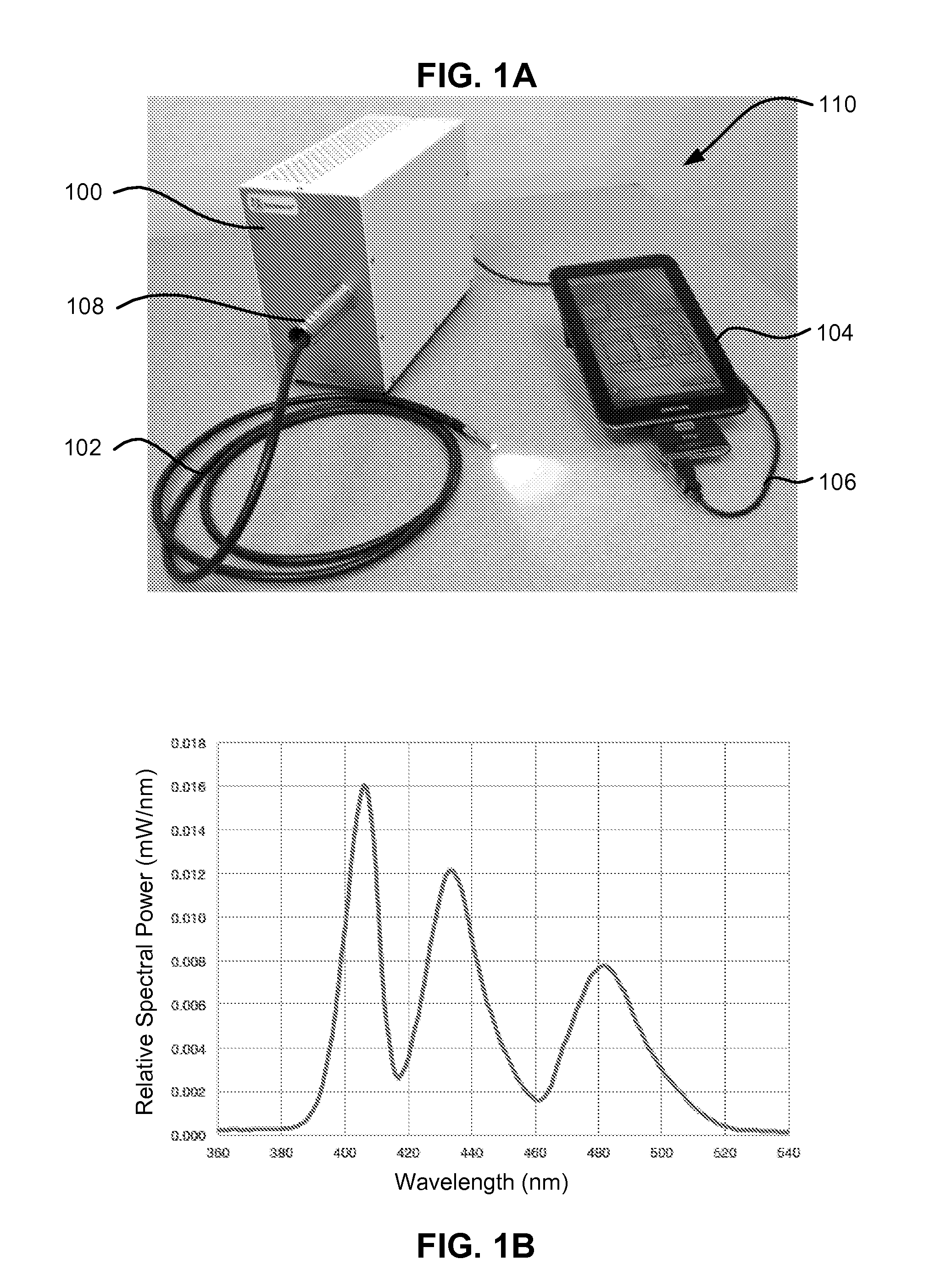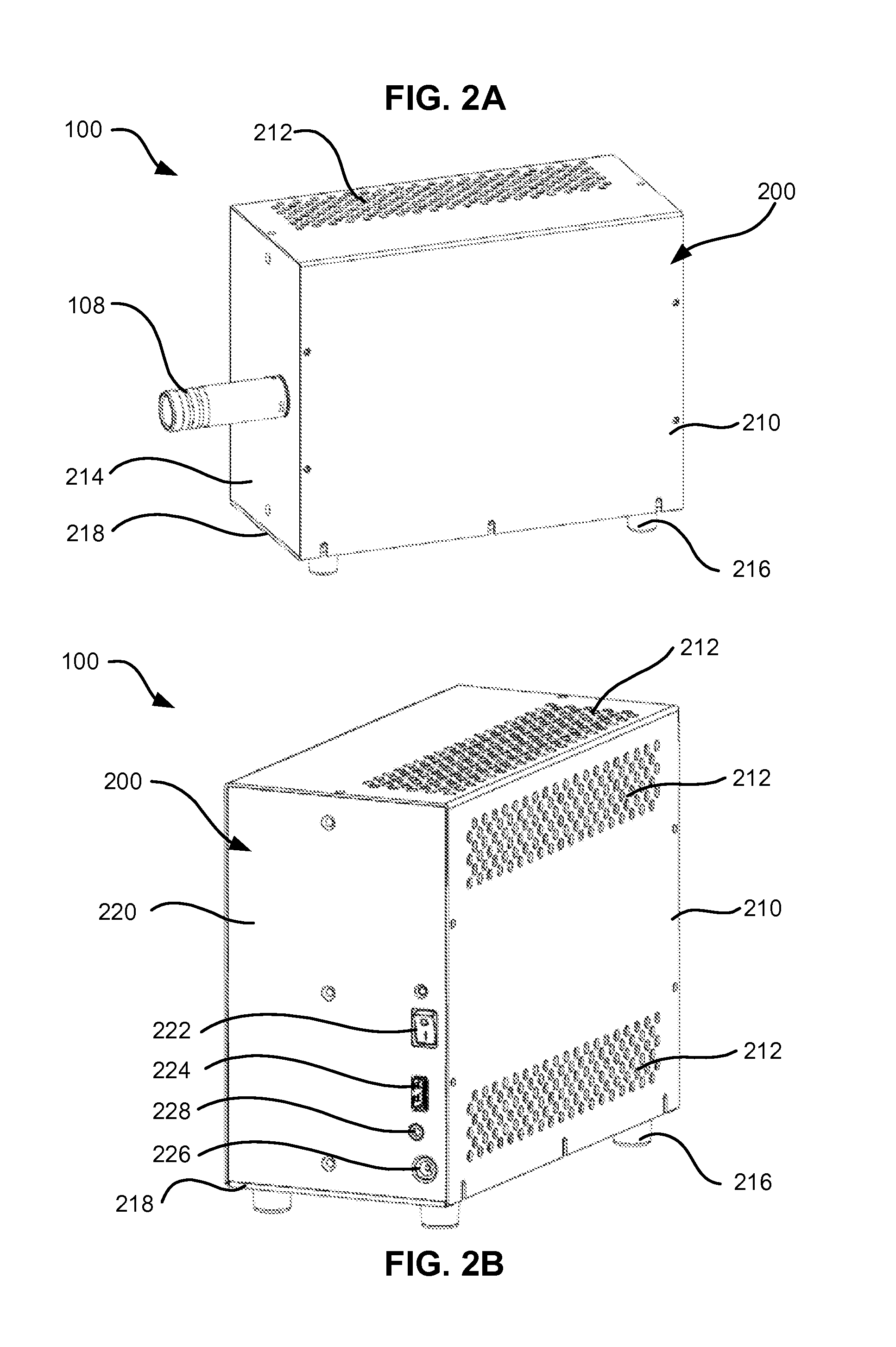Solid state light source for photocuring
a light source and photocuring technology, applied in the field of solid-state light sources for photocuring, can solve the problems of reducing the life of the lamp, reducing the life span of the lamp, and requiring costly replacement parts, and achieves the effects of low heat output, reduced cost, and superior performance and cost analysis
- Summary
- Abstract
- Description
- Claims
- Application Information
AI Technical Summary
Benefits of technology
Problems solved by technology
Method used
Image
Examples
Embodiment Construction
LED Light Engine System for Photocuring
[0036]While no one lighting solution can best satisfy all instrument architectures, an LED light engine according to an embodiment of the invention combines the best of solid state technologies to meet or outperform the traditional technologies listed in Table I on the basis of all figures of merit across all wavelengths desired for photocuring. In an embodiment of the invention, an LED light engine can emit light exceeding 500 mW / color with intensifies up to 10 W / cm2 at wavelength suitable for photocuring. The present invention offers a smart alternative for light generation. The capabilities of the LED light engine are highlighted in Table II. The high performance illumination provided by the LED light engine is embodied in a single compact unit designed to replace the entire ensemble of lighting components. The sources, excitation filters, multicolor switching capabilities and fast pulsing are contained within one box with a small footprint ...
PUM
 Login to View More
Login to View More Abstract
Description
Claims
Application Information
 Login to View More
Login to View More - R&D
- Intellectual Property
- Life Sciences
- Materials
- Tech Scout
- Unparalleled Data Quality
- Higher Quality Content
- 60% Fewer Hallucinations
Browse by: Latest US Patents, China's latest patents, Technical Efficacy Thesaurus, Application Domain, Technology Topic, Popular Technical Reports.
© 2025 PatSnap. All rights reserved.Legal|Privacy policy|Modern Slavery Act Transparency Statement|Sitemap|About US| Contact US: help@patsnap.com



